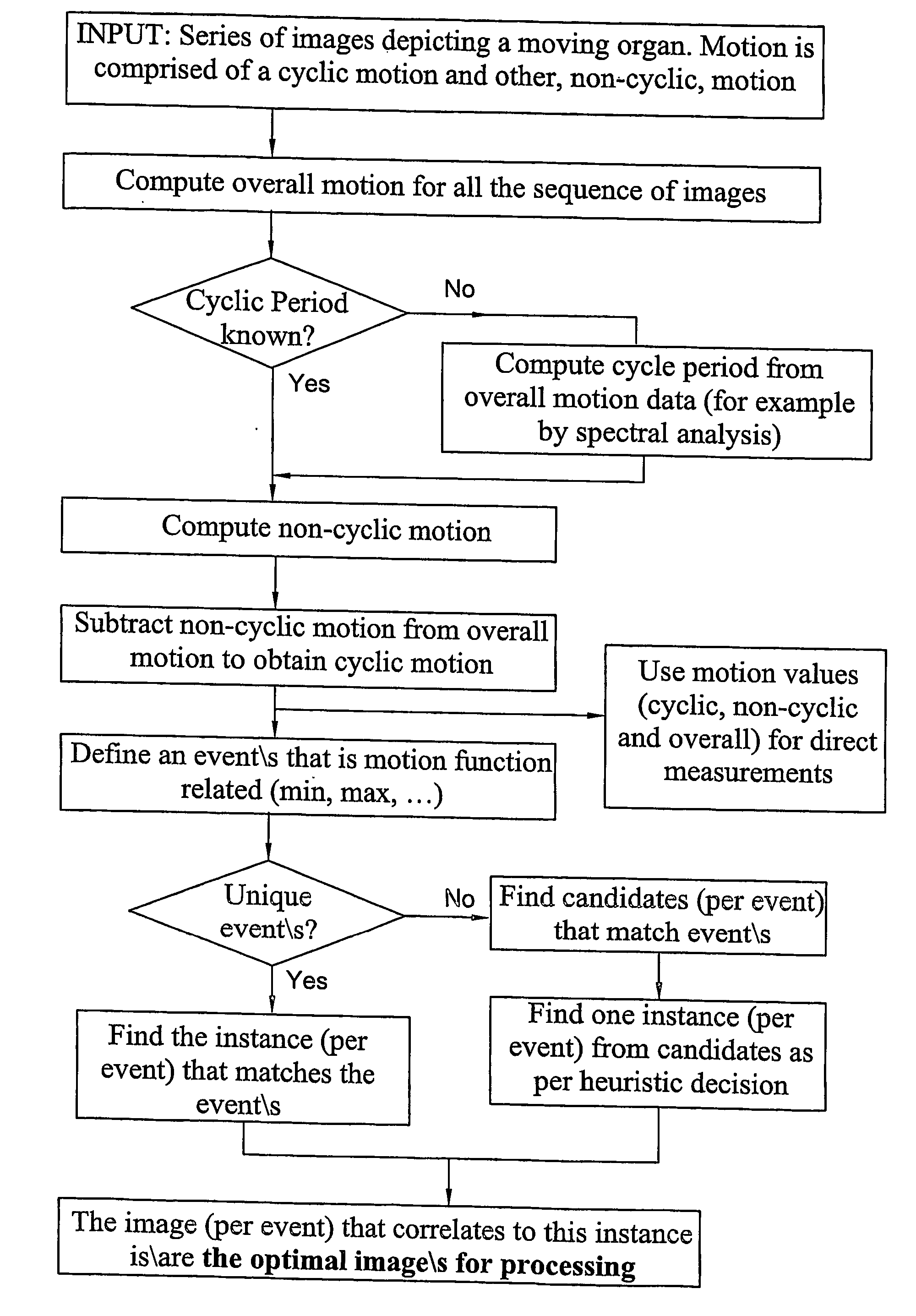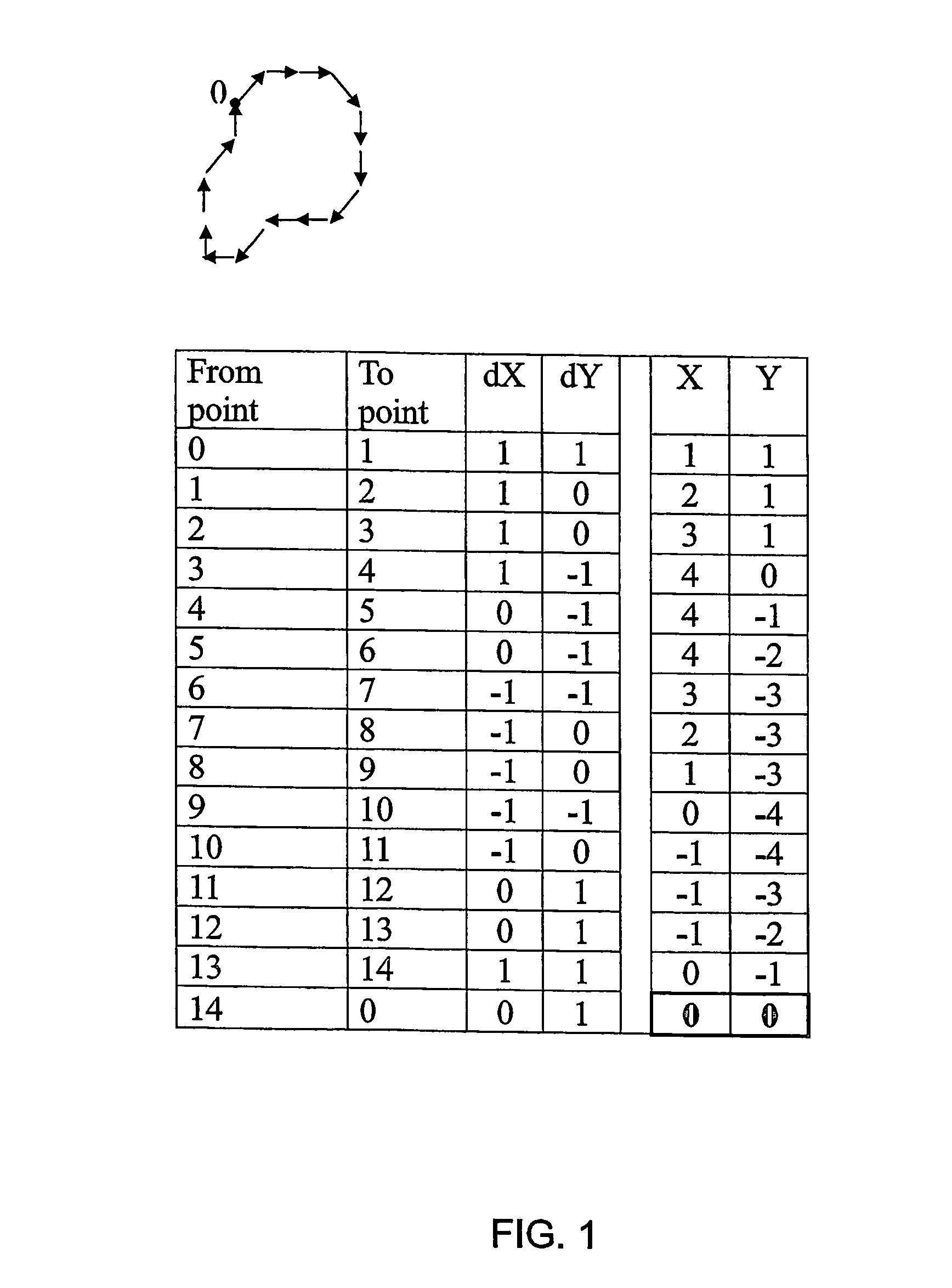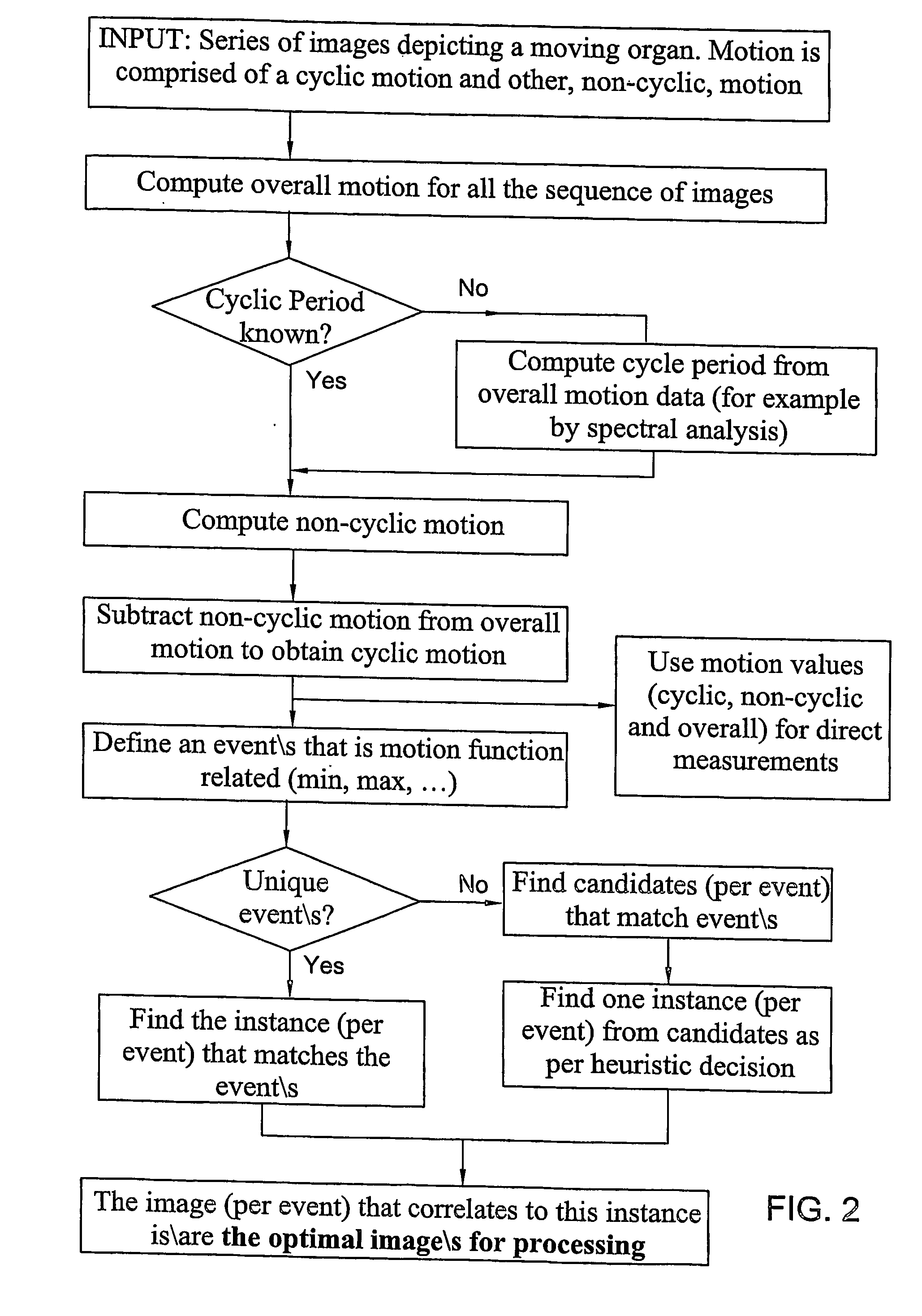Method and system for identifying optimal image within a series of images that depict a moving organ
a technology of moving organs and images, applied in the field of medical image processing devices, can solve the problems of inaccurate measurement, difficult correlation of ecg signal to desired coronary state, and impairing of image results,
- Summary
- Abstract
- Description
- Claims
- Application Information
AI Technical Summary
Benefits of technology
Problems solved by technology
Method used
Image
Examples
embodiment
Preferred Embodiment
[0060] We suggest a preferred embodiment for an application of three-dimensional reconstruction of coronary vessels from a procedure of conventional angiography. In order to reconstruct a three-dimensional image of the arteries, it is necessary to obtain at least two two-dimensional images of the arteries in the same phase of the heartbeat, for example at end-diastole. Therefore, image acquisition is usually synchronized to an ECG signal. This procedure involves simultaneous recordings of the video signal from the X-ray camera and the patient's ECG signal. We present here a novel method for identifying the end-diastole instance, equivalent to ECG-gating, without relying solely, if at all, on the ECG signal.
[0061] Let IM1, IM2 . . . IMn be n images of a catheterization-acquired run.
[0062] Let m be the number of frames per cardiac cycle, either known in advance or computed as detailed in the above-described method for estimating the organ's motion.
[0063] Let IMk...
PUM
 Login to View More
Login to View More Abstract
Description
Claims
Application Information
 Login to View More
Login to View More - R&D
- Intellectual Property
- Life Sciences
- Materials
- Tech Scout
- Unparalleled Data Quality
- Higher Quality Content
- 60% Fewer Hallucinations
Browse by: Latest US Patents, China's latest patents, Technical Efficacy Thesaurus, Application Domain, Technology Topic, Popular Technical Reports.
© 2025 PatSnap. All rights reserved.Legal|Privacy policy|Modern Slavery Act Transparency Statement|Sitemap|About US| Contact US: help@patsnap.com



